Embroidery is one of my favorite A&S activities within the Society and I honestly wish that I had more time to commit to making and finishing projects. I have many half-completed projects and ideas for others – I only hope that I live long enough to see them through!
An Embroidered Pillow in Black & Gold
This pillow was embroidered based on my interpretation of a period style found in 15th century Spain.

The style of embroidery is a counted blackwork, though gold floss was used. Blackwork is typically seen on garments in England from the time of Henry VIII, however the term “Spanish work” was also applied to this same style. The belief became that Catherine of Aragon brought blackwork garments with her from Spain to England. The pattern created for this pillow was inspired by a portrait, believed to be of Catherine of Aragon herself, painted by the Spanish artist Juan de Flandes in approximately 1496.

For the pillow’s materials, I used Zweigart brand Belfast 32 count 100% linen and Au Ver A Soie brand silk embroidery floss for the pillow’s exterior case. The body of the pillow consists of a linen interior case stuffed with goose down. The case of the pillow was then sewn closed using a whip stitch in a cotton thread.
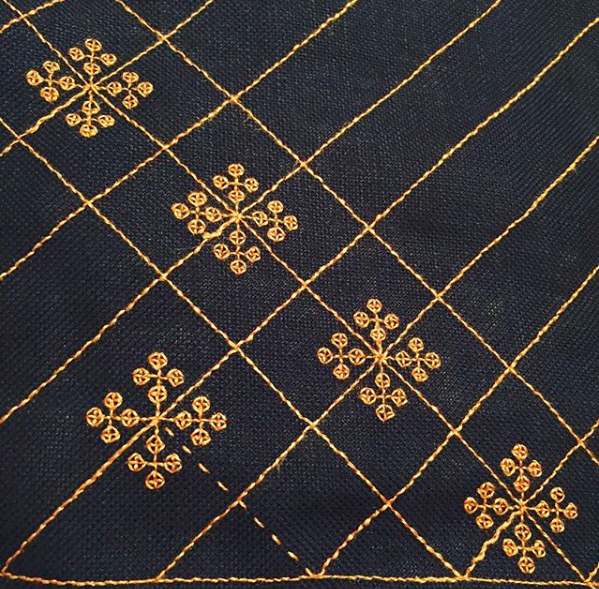

This was my first entry in an A&S competition. The embroidered design on this pillow was my second project to use blackwork or any kind of counted thread embroidery. I was very pleased with how it turned out and I’m proud to say that it won the Best Novice in the A&S competition at the Spanish Inquisition – Torquemada’s Trans-Iberian Tour event on January 21, 2017.

After winning the Best Novice entry, I was honored to be selected as the Baronial A&S Champion for the Barony of Ponte Alto. I then entered the pillow again at the Baronial A&S Champions competition at Kingdom A&S Festival in 2017.
A Blackwork Napkin
I first learned the technique of blackwork during an Atlantian University, at a class taught by Lord Robert Shockley of Avonsford. I immediately fell in love with counted thread embroidery, as it appealed to my love of symmetry and evenness. My first blackwork project – a gift for a friend that has yet to be gifted! – was a napkin with a hem-stitched edge and blackwork motifs decorating its corners. I still have additional motifs that I would like to add, so – for now – it remains in progress.
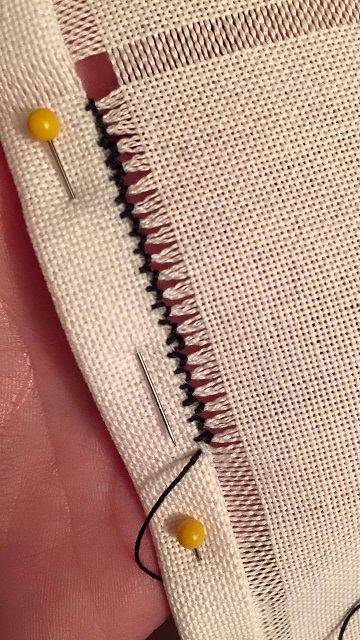
I love to hem stitch the edges of any embroidery project the requires a clean finish. This is one of my favorite embroidery techniques and I find it to be particularly calming & meditative due to its simplicity.

German Brickstitch
Another of my favorite counted thread techniques is brickstitch. I learned this technique for a project that was never completed and, most likely, never will be. But I do hope to start a new project in order to practice this technique some more – I’m thinking, a German pouch? To be determined!
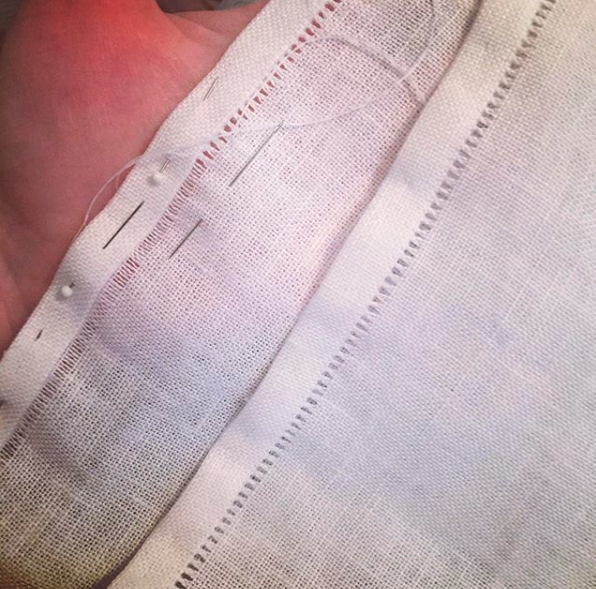
The pattern was taken from Master Richard Wymarc’s collection at http://wymarc.com/index.php/patterns
It is Pattern 23: A Fragment.


A Norman Dress
One of my first, big embroidery projects was to make a simple dress with very elaborate embroidery – inspired by the Norman garb of the 12th Century.
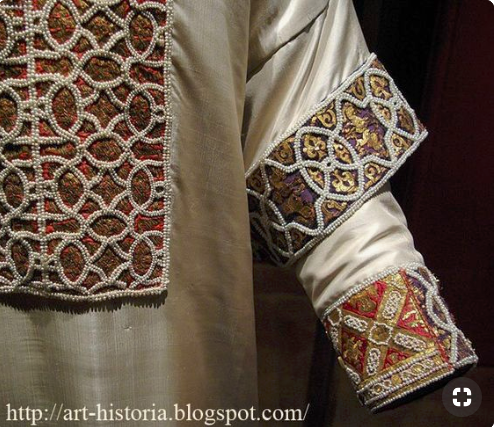
My version of this garb was much simplified – made with Appleton’s crewel wool on linen, in a combination of chain and stem stitch. I also used a blanket stitch around the border of the neck and sleeves.
To transfer the design to the linen, I traced the motif onto Strathmore Tracing Paper and darkened the lines with a black sharpie. I then taped the paper with the outlined design to a window on a sunny day, then taped the linen over top of the paper. The light shining through the window allowed me to see the black lines on the paper through the light green linen, and then, in turn, trace those lines onto the linen with the Wrights 8823005 Water Soluble Marking Pen in blue. I find this pen to be wonderful for embroidery projects as the markings disappear as soon as you add water.
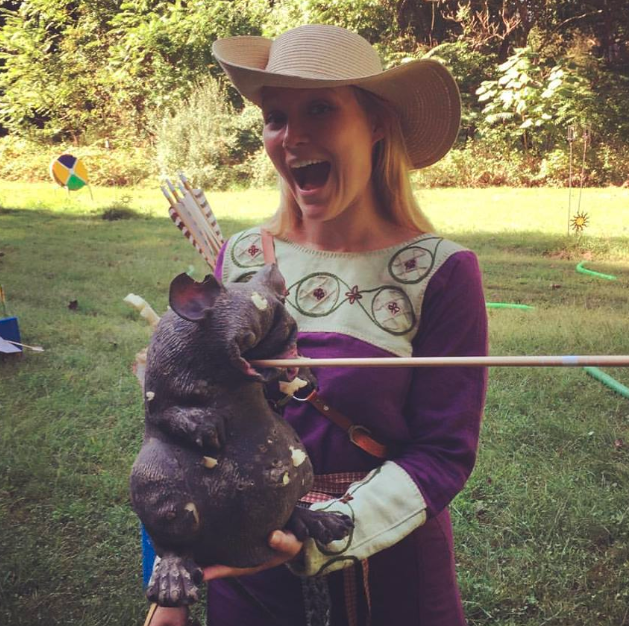
I no longer wear early period garb, but as of June 2023 I had sewn and embroidered a number of Norman and Viking “soft kits” that would be mixed and matched. These include seven dresses/underdresses and five apron dresses.
Mammen Embroidery
Another unfinished project! I began recreating the Large Masks motif from the burial at Bjerringhøj, in Mammen parish, Middelsom herred, in northern Denmark. The finished product was meant to be an embroidered bank for a Viking hat, but it never quite made it that far.
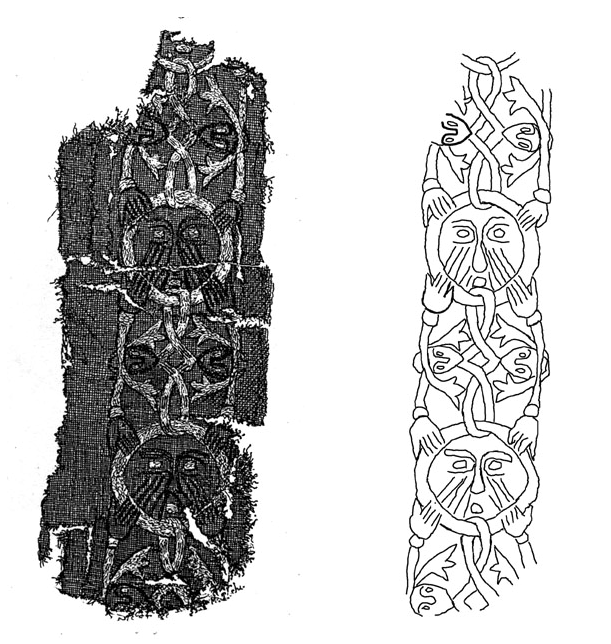
The embroidery was done with Au Ver A Soie brand silk embroidery floss on inherited fabric – I was told it was a silk blend, but that may or may not be correct.
I traced the technical drawing (above) on to the fabric using a light box.
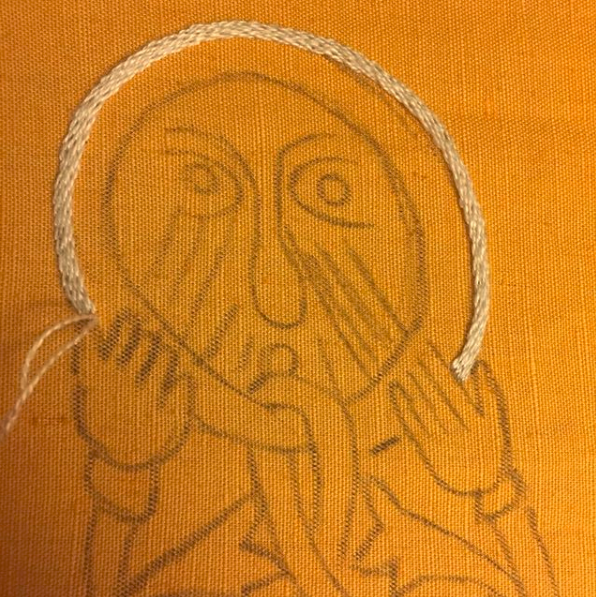

A Lady’s Favor
A quick project, gifted to a fighter as a favor for a heavy tournament in early 2017. The motif is my first badge registered with the Society: Argent, a tree blasted sable and in chief a mullet of seven points purpure.
I traced the design using my computer screen – haha! Like I said, it was done quickly 🙂

The embroidery was done in satin stitch with DMC floss on white linen.
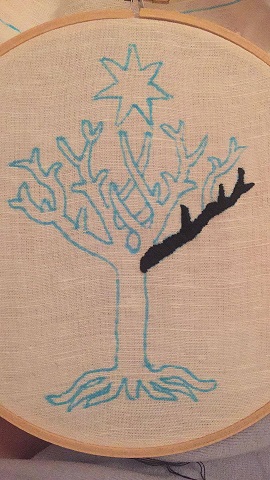
The beginnings of the satin stitch as the tree branches are filled.
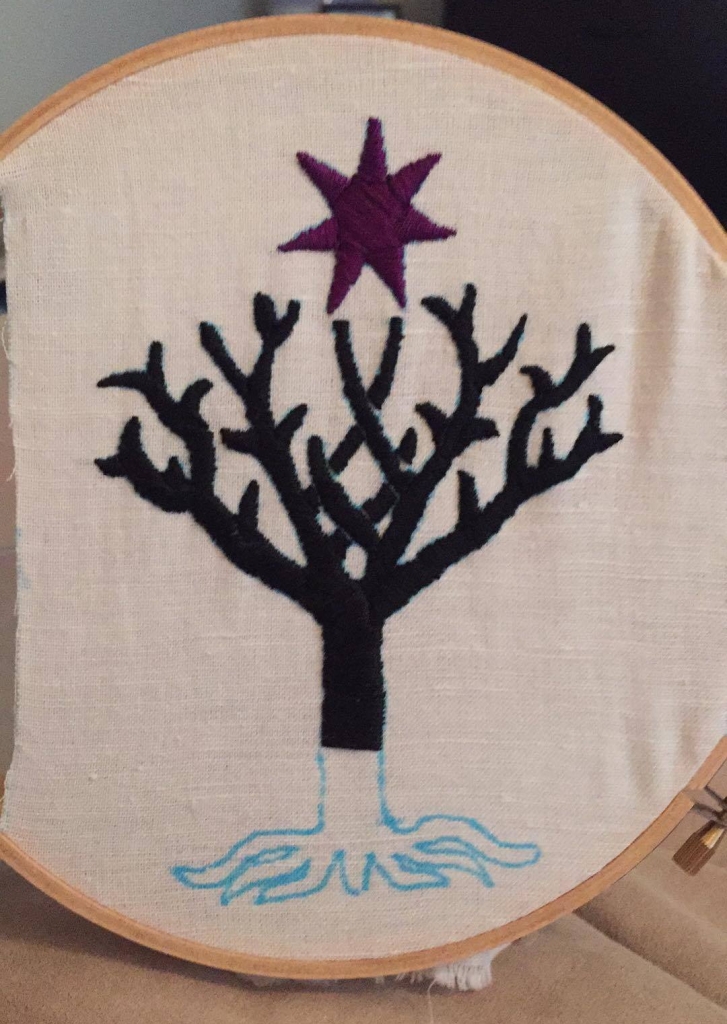
The edge of the linen was finished with a machine. Since it was meant to be worn on the fighting field, I didn’t want to spend too much time fancying up something that was likely to end up torn and dirty!

I had no idea you embroidered! (I got here via Google Image Search for ‘Mammen embroidery’ – saw your name next to the image and said “Hey I know her!”) These are so lovely!
LikeLiked by 1 person
Aww, thank you!
LikeLike